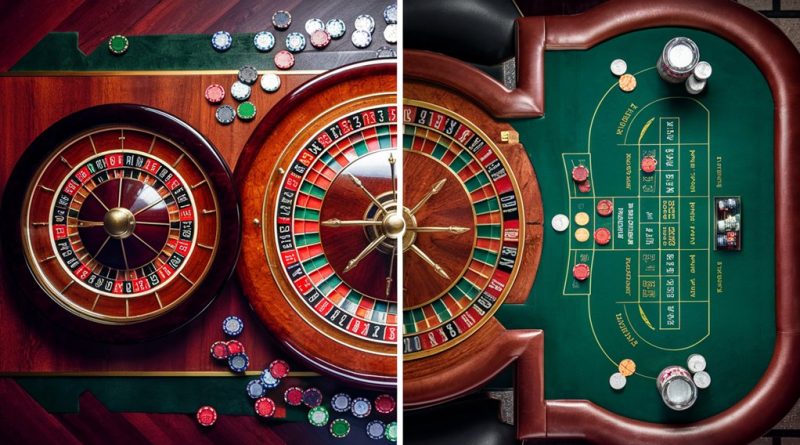Understanding the Difference Between Betting Systems in Casinos
Core Betting System Types
Casino betting systems are split into categories that each utilizes several mathematical methods of betting. Positive progression systems such as the Paroli method increase bets following wins, taking advantage of hot streaks. On the other hand, negative progression methods for instance the Martingale system ramp up wagering amounts after losses in an effort to recover earlier set-backs.
Advanced Betting Techniques
Corninate betting systems
The Martingale System needs substantial capital reserves. Eight consecutive losses at a $10 base bet requires $2,560. This is a mathematical progression that always doubles after each loser to recoup previous losses with a single winner.
Cautious Assessment
Flat betting keeps wager amounts stable throughout gameplay, offering dependable bankroll management. Percentage betting systems give limited risk exposure by capping each wager at 1-2% of total funds.
Discernible Patterns
Sequential betting strategies concentrate on charting outcome patterns and altering wagers based on historical results. The approach fuses mathematical probability with trend observation for enlightened decision-making.
Mathematical Principles
Each betting system relies on its own distinct mathematical foundations. Regardless of the strategy chosen, house edge remains constant; but understanding the mechanics of these systems exposes a degree of risk versus reward that informs how much money needs to be held back for insurance or even if it’s worth trying at all. Risk management is as different as night from day between those who work on enticement through rapid progressions and players employing conservative percentage-based trails that quickly strain but also have more staying power.
Common Betting Systems Explained
Understanding Casino Betting Systems: A Full Guide
What’s The Type of Betting Progression System?
Casino betting systems can be significantly classified as positive progression and negative progression systems.
Getting Down
Every approach has its own set methods for managing your bankroll and betting tracks.
Basic Positive Progression Betting Systems
Positive progression betting systems require players to raise their bets following wins. Two prominent examples include:
The Paroli System
Double your wager after each winner
Three at most consecutive wins
Restart from base amount after losing or completing a sequence
Cautious bankroll management
The 1-3-2-6 System
Structured betting system in effect after a win
Progressive increases in bet size: 1 unit makes the 3 units 2 then 6 (Total stake is actually multiplied by nine times.)
Reset your stake to the initial amount after any loss
Balanced risk-reward response
Negative Progression Betting Systems
Negative progression strategies increase betting amount after losses, attempting to recoup previous losses.
The Martingale System
After each loss, the bet size will increase.
It aims to payoff for all losses plus one unit in profit.
Among popular systems this method most Petal & Prowl Poker emphasizes risk.
It requires a large bankroll size.
The D’Alembert System
Gradual increases in wager sizes after losing
Bet only one unit more or less at a time
Much more sustainable than Martingale
Safer over the long term, too
System Effectiveness and House Edge
If betting systems help guide your gambling, they can’t change chance itself. They can, however, modify how much you hope to win on average, or put a lower limit on how much the game’s house edge will cost you.
Each system brings its own special risks and balance sheet requirements. For a Martingale player, these can be extensive losses caused by a long losing streak. The Paroli might serve to hedge this somewhat.
The Martingale System
Knowing about the Martingale Betting System
How the Martingale System Works
The Martingale betting system is one of the simplest yet most potentially destructive strategies in gambling.
After each loss, the core idea doubles down on bets in order to attempt a return that equals all previous losses plus at least an equivalent to the initial stake.
Mathematical Analysis of the Martingale
A typical run of martingale bets follows this pattern. Beginning with a bet of ten dollars, three successive losses produces the following sequence: $10, $20, $40, then an $80 bet.
If the gambler wins at this point, he will have wiped out the $70 loss as well as made $10 in profit: that is to say, the initial stake. This geometric progression shows the exponential nature of a system typical to martingale betting.
Critical Limitations and Risks

Table Limits versus Bankroll Demands
It is evident that the Martingale has two all-important restrictions:
Casino limits stop progress without ending it entirely.
Also, the enormous losses in requirement for capital that come with each loss.
If the original $10 bet grows to $2,560 after eight consecutive losses, which is a mathematical possibility, then this sequence illustrates exactly why the system ultimately is not responsive to the player’s ruin principle: on one hand there are limited resources meeting all possible losses.
Statistical Truth
The Martingale betting system convinces people that they may gain steady profits except when confronted with very large losses.
The realities of mathematics show that no betting system can beat the advantage casinos have in games, particularly betting on what is called negative slow means this sort of roulette strategy to be more than dangerous. Growing betting or martingale is a case in point; the greater lengths you need before achieving a win can make whole series and losses—in fact, this one actually busts banks from time to time!
Progressive Betting Strategies
Overview of Progressive Betting Strategies
Types of Progressive Betting Systems
Progressive betting systems are intricate strategies that change bet sizes dynamically based on past game results.
These systems can be divided into two main categories Arc & Rust Slots positive progression and negative progression strategies or the progression system that is used.
Positive Progression Systems
Positive progression means increasing your stake after you have won. But bet sizes are reduced so that risk levels are kept low.
Paroli, a well-known positive progression strategy, is a system where you double your stakes after each win. In practice, its use is typically bounded by three consecutive wins and then restart to what your initial bet was, thus making it a safe way to manage your bankroll.
Negative Progression Approaches
Negative progressions work by increasing your stake after a loss.
D’Alembert is a more measured approach than the classic large bet systems like martingale. It uses single unit adjustments rather than doubling up as with them. Players increase their bet by one unit after each loss and reduce it likewise in size following a win, thus balancing the deficit mathematically.
Mathematical Considerations and House Edge
While betting systems give structure to gambling and a place to class civilizations that means to build their money methodically over time, they cannot change the house edge on casino games.
Statistical analysis shows that these systems may:
Create a longer playing time.
Give an organized betting pattern.
This kind of diminishes short-term variance in casino games.
Lead to careful bankroll management in the form of rules and practices. 온카스터디 먹튀검증
Progressive strategies succeed if bankroll requirements are carefully considered. Risk tolerance and game selection must also be factored in. But the basic mathematical reality still remains that no betting system can overcome established house edges to guarantee consistent win.
Flat Betting Methods
Overview of Flat Betting Strategies
The Fundamental Tactics of Flat Betting
Flat betting is the simplest and most reliable of all casino wagering tactics.
So with this method, whatever happens, bet size doesn’t change for an entire playing session.
This method makes the bankroll so stable, even if some day it might not be able to avoid bad results, you are generally looking at stability.
Statistical Advantages of Flat Betting
Mathematical analysis demonstrates clear benefits of flat betting strategies.
The method maintains constant risk exposure at every betting interval, enabling precise calculation of expected loss rates.
For instance, in blackjack (where the house edge is only 0.5%) and with $20 fixed bets, the statistical expected loss averages 10 cents per hand.
Bankroll Management Gains
Though flat betting does not change the basic house edge or increase one’s chance of winning, it does give players greater freedom in handling their bankroll.
On the basis of their original bankroll, the players can fairly accurately predict how many wagers and for what size they are due before running out.
The method promotes disciplined gambling and eliminates the temptation to bet more when winning or chase your losses from losses past.
Main Advantages:
Predictable risk management
Consistent bankroll control
Enhanced emotional discipline
Simplified betting decisions
Reliable loss rate calculations
Pattern Recognition Initiatives
Understanding Pattern Recognition in Casino Games
The Truth about Pattern Recognition Methods
Pattern recognition strategies have drawn many followers of casinos because they appear to offer a logical system to trace game results.
Despite the fact that many people study trends closely in roulette, baccarat, and slot machines, abundant statistical evidence has shown such techniques are based solely on gambler’s fallacy.
Scientific Analysis of Tracking Patterns
Pattern Tracking Systems
The latest pattern tracking methods generally involve:
Outcome matrix details
Sequence tracking
Statistical models
Collection and analysis of historical data
Mathematical Reality
The central defect in casino pattern recognition is in probability mathematics. Some key points are:
Every game event remains statistically independent.
Past performance will not influence future results.
Probability ratios are unchanging.
All results must follow a purely random distribution.
Common Pattern Recognition Techniques
Roulette Patterns
House Odds
See, no matter in roulette (double- and single-zero), the number 18/37 can come out red, and is driven by probability, we’ve noted elsewhere that there are underlying problems with the system.
